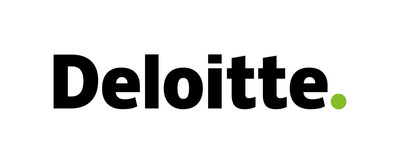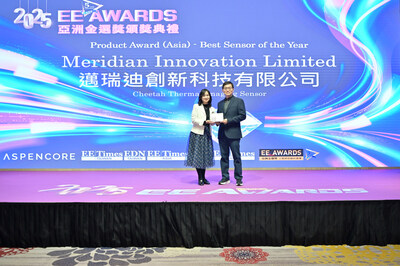Deloitte Government Tech Trends 2018: How Government Organizations Can Bring Together Strategy, Technology and Operations in ‘The Symphonic Enterprise’
Press Releases
Feb 05, 2018
WASHINGTON, Feb. 5, 2018 /PRNewswire/ — Deloitte has released “A Government Perspective: Tech Trends 2018,” the latest edition of its annual in-depth examination of emerging trends in government technology.

This year’s government-specific report spotlights eight trends that are shaping strategic and operational transformations and redefining information technology’s (IT) role within the enterprise. This year’s theme, “The symphonic enterprise,” is an idea that describes strategy, technology and operations working together, in harmony, across domains and boundaries.
“The goal of the 2018 Government Tech Trends is to provide government leaders, across the enterprise, with a better understanding of these technological forces so they can develop strategies and collaborate to build a symphonic enterprise of their own,” said Sanjay Shah, principal, Deloitte Consulting LLP, and public sector technology leader.
“Instead of implementing ‘one-off IT initiatives’ in a single domain, government organizations can be more forward-looking and develop an approach by which disruptive technologies can work in harmony in a holistic way across an agency, department or multiple departments,” said Scott Buchholz, managing director, Deloitte Consulting LLP, and federal chief technology officer.
Each of the eight trends listed below is also scored based on relevancy to government and government’s readiness to adopt (using a 1 to 5 rating, 5 being the most relevant/highest readiness).
- Reengineering Technology: A dual-pronged approach to technology. First, creating modernized IT infrastructure to help improve efficiency and deliver services in new ways. Second, streamline the processes of IT budgeting, organization, and delivery to drive mission success.
(Score: relevancy 5, readiness 4) - No-collar workforce: Automation, artificial intelligence (AI), and cognitive technologies are changing the way work gets done. Organizations should redesign systems and talent to accommodate the increased use of cognitive agents, bots and other AI-driven technologies.
(Score: relevancy 4, readiness 3) - Enterprise data sovereignty: A combination of automation and machine learning is making it possible to “free” data from the siloed systems that create and hold it. New technologies can give organizations new ways to manage interrelationships, storage and security of enterprise data, while dramatically improving both availability and security.
(Score: relevancy 3, readiness 2) - The new core: Starting with areas like finance and supply chain, technologies such as blockchain, machine intelligence, and the internet of things are presenting opportunities to modernize the back office and support better constituent-facing innovation and growth.
(Score: relevancy 3, readiness 3) - Digital reality: The combination of augmented reality (AR) and virtual reality (VR) is beginning to move beyond proofs of concept to enterprise implementation. Government use cases might include training for complex tasks and group collaboration.
(Score: relevancy 3, readiness 2) - Blockchain to blockchains: Blockchain technologies are moving past the exploration stage and finding real-world adoption. Organizations are increasing the scope, scale and complexity of their blockchain applications, and some organizations with multiple blockchains are piloting the most effective ways to integrate them.
(Score: relevancy 3, readiness 1) - API Imperative: Application programming interfaces (APIs) have long been key building blocks to system and application integration, interoperability and modularity. Now organizations are making data more accessible by treating APIs not as data integration mechanisms, but as products.
(Score: relevancy 3, readiness 3) - Exponential watch list: Artificial intelligence, quantum encryption, and other exponential technologies may be years away. But technology moves fast. Government organizations should start developing partnerships and capabilities to research, vet, incubate and scale these technologies for when they arrive.
(Score: relevancy 3, readiness 1)
About Deloitte
Deloitte provides industry-leading audit, consulting, tax and advisory services to many of the world’s most admired brands, including more than 85 percent of the Fortune 500 and more than 6,000 private and middle market companies. Our people work across more than 20 industry sectors to make an impact that matters — delivering measurable and lasting results that help reinforce public trust in our capital markets, inspire clients to see challenges as opportunities to transform and thrive, and help lead the way toward a stronger economy and a healthy society. Deloitte is proud to be part of the largest global professional services network serving our clients in the markets that are most important to them.
Deloitte refers to one or more of Deloitte Touche Tohmatsu Limited, a UK private company limited by guarantee (“DTTL”), its network of member firms, and their related entities. DTTL and each of its member firms are legally separate and independent entities. DTTL (also referred to as “Deloitte Global”) does not provide services to clients. In the United States, Deloitte refers to one or more of the US member firms of DTTL, their related entities that operate using the “Deloitte” name in the United States and their respective affiliates. Certain services may not be available to attest clients under the rules and regulations of public accounting. Please see www.deloitte.com/about to learn more about our global network of member firms.
![]() View original content with multimedia:http://www.prnewswire.com/news-releases/deloitte-government-tech-trends-2018-how-government-organizations-can-bring-together-strategy-technology-and-operations-in-the-symphonic-enterprise-300592922.html
View original content with multimedia:http://www.prnewswire.com/news-releases/deloitte-government-tech-trends-2018-how-government-organizations-can-bring-together-strategy-technology-and-operations-in-the-symphonic-enterprise-300592922.html
SOURCE Deloitte



